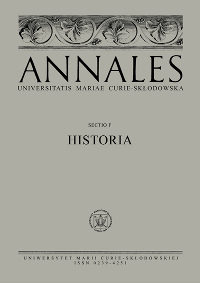Trucizny w rzymskiej weterynarii. Zastosowanie roślin
z rodzin Papaveraceae oraz Solanaceae
Poisons in Roman Veterinary Medicine: The Use of Plants from
the Papaveraceae and Solanaceae Families
Author(s): Agnieszka BartnikSubject(s): History, Ancient World
Published by: Wydawnictwo Naukowe Uniwersytetu Marii Curie-Sklodowskiej
Keywords: ancient veterinary; opium; henbane; mandrake; buttercup; wolfsbane; black nightshade
Summary/Abstract: Plants from the Papaveraceae (poppy) and Solanaceae families were used both in ancient veterinary medicine and human medicine. The then veterinarians mainly used opium and henbane to treat respiratory diseases, haematuria, gout and insania (mental disease). These substances, however, were used less frequently than in human medicine due to the diff erences in animal and human diseases. Occasionally, buttercup, wolfsbane, mandrake and black nightshade were used in veterinary treatments. Most of the references to the use of poisonous plants in veterinary medicine come from the texts dating back to the 4th century; earlier information on the subject was sporadic and only appeared in the writings by Columella.
Journal: Annales Universitatis Mariae Curie-Skłodowska, sectio F – Historia
- Issue Year: 76/2021
- Issue No: 1
- Page Range: 9-42
- Page Count: 34
- Language: Polish

